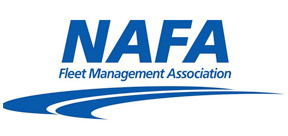Naples’ journey to maximize its use of reclaimed water

While water is often taken for granted by the average consumer, members of public works departments know the immense value water has to a community and there is a finite amount available in a given year.
For decades, municipalities have increased their water supply by utilizing reclaimed water, which is wastewater treated and converted into water that can be used for certain purposes, such as irrigation, construction and replenishing groundwater.
The city of Naples, Fla., first introduced reclaimed water to its community more than three decades ago.
“We became a reclaimed water utility,” Bob Middleton, the utilities director for the city of Naples, said. “We installed our first reclaimed water distribution transmission mains in 1988. That line went to 10 golf courses within the city of Naples’ utility service area. The thing about those golf courses, they’re on a long strip of road called Goodlett Road, and there’s kind of one right after another, so it was easy to run mains to them to get them on reclaimed water instead of competing with the city on groundwater, which is what we use for drinking water.”
But for a period of time, those golf courses didn’t use the reclaimed water because there wasn’t any incentive to do so. To combat this, the South Florida Water Management District stepped in five or six years later and told the golf course they would no longer be issued irrigation permits if they didn’t use a certain amount of reclaimed water each year.
But nearly a decade ago, Naples and the state of Florida realized that the city still wasn’t using enough reclaimed water because too much excess of it was being put into the Gordon River.

Naples, Fla.’s, golf courses were the first to receive reclaimed water for their irrigation needs. Through this and expanding its reclaimed water to residential areas in 2008, the city has saved roughly 2.5 million gallons of treated drinking water a day. (Shutterstock.com) 
With its aquifer storage and recovery wells, Naples, Fla., aims to meet its future water needs. Pictured is Naples’ skyline on the water at dusk. (Shutterstock.com)
“We came up with several different plans that really never took hold until 2006,” Middleton said. “We started expanding the reclaimed water to residential areas in the Port Royal area specifically, which is in the southern part of our water distribution district. Those are luxury homes with huge lots and they used a lot of water for irrigation.
“In 2006, we began that construction; in 2008, we completed it. We cut about 2.5 million gallons a day off of the drinking water side and applied it to the reclaimed water. That was a big savings.”
But Naples didn’t want to stop there. It hired a private consulting company to create an integrated water resources plan, which it began construction on in 2012.
A big part of the plan was, after expanding its reclaimed water use, finding a way to make sure Naples had an adequate supply year-round. For most of the year, the city can pull extra water from an area canal, but for a few months a year, that dries up.
“We know that two months out of every year, we’re going to be in drought,” Middleton said. “It’s just the dry season and that happens between March, April, May and June of every year; and typically, over a 50-year period, (the dry season) has been two months. We had to come up with a method to have water resources available during the dry season. We constructed three aquifer storage and recovery wells that are about 1,000 feet deep.
“During the wet season, when we have plenty of reclaimed water, we’re putting that water down in those storage wells.”
The project was completed in about five years, and now Naples is filling in the areas where the additional water mains were installed.
Overall, the city has seen immense benefits to its drinking water and the longevity of its water treatment plant.
To help pay for the project, the city of Naples received some grants and also slightly raised the bimonthly utility bills for residents and golf courses.
“Where we are right now we are cutting about 4 1/2 million gallons a day off of the drinking water system and putting it on the reclaimed water system,” Middleton said. “What that does for us is it extends the life of our current water treatment plant and the water supply, which is the Lower Tamiami Aquifer. It extends it indefinitely, in my opinion, because before we installed reclaimed water to residential areas, 70% of the water we produced at the water treatment plant went on the ground for irrigation. “Our potable consumption was about 370 gallons per person per day. Now it’s under 200 gallons per person per day. That saves the resource. We’re not pulling that freshwater out of the ground at that rate anymore for drinking water. We’re able to save that water resource.”



My husband, James L. Chaffee, who was the City of Naples City Engineer/Utilities Director from 1985-1990, oversaw the design and installation of the first reclaimed water facility in Southern Florida as you briefly mentioned in this informative article.